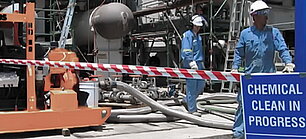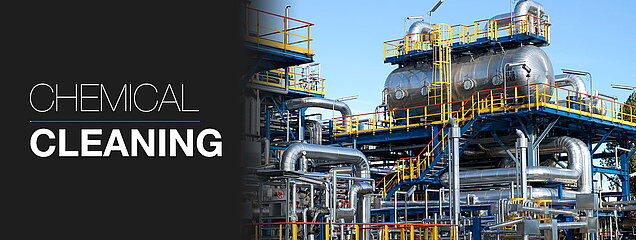
Chemical Cleaning vs Fiber Laser Cleaning
Good for cleaning surface contamination from a whole part, chemical cleaning is not easily applied to a selective area. Disposing of the chemicals is an increasingly difficult and costly challenge due to regulatory controls.
Fiber lasers can be applied selectively. With no chemicals to degrade, quality is consistent, and there are no chemical solvent disposal issues. With no drying time, parts are available immediately.

Why do we have to investigate alternative solutions to chemical and mechanical paint removal?
The list of negatives concerning chemical depainting is long, including:
- The requirement to mask sensitive areas of the fuselage prior to chemical application;
- The requirement for personal protective equipment to handle the chemicals;
- Large water usage to rinse chemicals from aircraft;
- Large multiplication of hazardous waste volume;
- Release of carcinogenic hexavalent chrome primer into the waste stream;
- Personnel exposure to hazardous chemicals;
- The inability to use on aircraft wings because of chemical ingress;
- The requirement to de-mask prior to painting; and
- The cost of hazardous waste disposal.
It is no surprise that alternatives to these depainting methods have been sought for many years. Now, laser paint stripping is finally emerging as a credible solution to replace the hazardous, environmentally unfriendly, chemical, and mechanical paint stripping methods that dominate aircraft depainting today. And, surprisingly, the boldest new initiative in laser paint stripping is being spearheaded by private industry.
